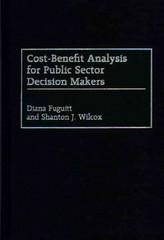Question
CASE STUDY 3.2 DIRECT PRODUCT PROFITABILITY INFORMATION: Filmco manufactures two thin film products (12m gauge) for packaging applications in the food industry. Product A is
CASE STUDY 3.2
DIRECT PRODUCT PROFITABILITY
INFORMATION:
Filmco manufactures two thin film products (12m gauge) for packaging applications in the food industry. Product A is coated so that it can be printed later; product B is uncoated. There is no changeover time on the production line, because all that has to happen is that the coating drum is turned on or off. Once produced on the film manufacturing lines, the film is cut to width and length according to the customer's order. Approximately 40% of Filmco's production is Type A and 60% is Type B, and film manufacturing requires. Film production takes place 360 days a year on a continuous basis due to the high capital cost of the process.
A DPP study was conducted at Filmco to determine the relative profitability of the two products A and B per major customer. The method was adapted from that shown in Table 3.1 because Filmco is a manufacturing environment. How this was done is explained below:
a. Invoice price: was the total value of sales invoiced to the customer.
b. Cost of orders: the total cost of the sales office (salaries, etc.) was divided by the number of orders shipped that month. This cost per order (150 euros) was allocated to each order placed by each customer.
c. Manufacturing cost: a variable cost was found for each product by collecting raw material, labor, energy, packaging and waste. Manufacturing overhead (fixed costs) were allocated based on direct labor. Due to the small difference in manufacturing methods, the manufacturing costs for the two products were similar. They were 2,107 for A and 2,032 for B.
d. Warehousing costs: the total cost of the warehousing operation is 800,000 per year. There are 8,300 pallet locations, and the cost/day of a pallet was calculated at 0.30 assuming 360 working days. The warehousing cost for a given order was calculated as the number of pallets the number of days 0.30.
e. Opportunity costs: orders must wait in the warehouse until the last coil has been produced. An order of 3,000 euros that remains in the warehouse for seven days at an interest rate of 14% is said to have an opportunity cost of 8.20 euros.
f. Transportation cost: this was based on a price per ton delivered to a given customer.
g. Total cost: was the sum of b to f for a given order.
h. DPP: was the selling price minus total cost g.
Table 3.3 presents a sample of the DPPs for four orders for customer P. The average DPP
for customer P over all orders shipped in a given month was 19.6%, while that of customer Q was 23.1% and that of customer R was 33.0%.
TABLE 3.3 CUSTOMER P'S DPP FOR A SAMPLE OF FOUR ORDERS IN A GIVEN MONTH

Step by Step Solution
There are 3 Steps involved in it
Step: 1

Get Instant Access to Expert-Tailored Solutions
See step-by-step solutions with expert insights and AI powered tools for academic success
Step: 2

Step: 3

Ace Your Homework with AI
Get the answers you need in no time with our AI-driven, step-by-step assistance
Get Started


